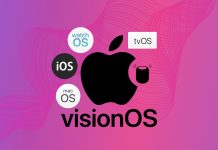Apple has re-iterated through an email sent to developers this past Friday that yes, June 1 is the start date for properly “sandboxed” Mac App Store app submissions. Here’s the word from Apple, as reported by MacStories:
As a reminder, the deadline for sandboxing your apps on the Mac App Store is June 1. We’ve made the process easier with new sandboxing entitlements and APIs now available in OS X 10.7.3 or later and Xcode 4.3.2.
If you have an existing app on the Mac App Store that is not sandboxed, you may still submit bug fix updates after June 1. If you have technical issues that prevent you from sandboxing your app by June 1, let us know.
For those of you who aren’t aware, the process of sandboxing is a new direction for the MAS and is more than a little controversial: An app that’s sandboxed will have limited ability to interact and use other apps. This is intended to limit the ability of malware to access other programs and wreak havoc upon the user. It’s not an unreasonable concern, either: How many Windows viruses enter through the browser and then use Outlook to do their damage? Apple has decided the Mac will have none of that and has said that after June 1 only sandboxed apps will be accepted to the Mac App Store.
The problem, however, is that apps can call upon other apps for much-needed help from which the user greatly benefits. Apps such as TextExpander or Dropbox use inter-app or background functionality to deliver their features to the user, and so obviously the sandboxing will greatly diminish their ability to work as intended. Developers aren’t super crazy about this. Luckily, a system of “entitlements” is created for apps to establish which other apps they need access to, and those entitlements are approved by Apple. So it’s not as if sandboxed apps are unable to access other apps. It’s just that they can’t do it without a “license”, so to speak.
It’s imporant to note that one does not have to acquire apps from the Mac App Store. As it has always been, anyone can download any app they like from anywhere on the web or install via CD and run it (in fact, for most apps, you still have to). The twist comes from the fact that Mac developers who don’t distribute their apps via the Mac App Store make 20 percent of those who do. This incentive catches developers in a bad place where they may have to choose between making the app they want to make or being able to make rent.
Source: MacStories






